Published 29 Jun 2025
Competitor Analysis: RateX.AI vs. AI-Driven Web3 Analytics Platforms
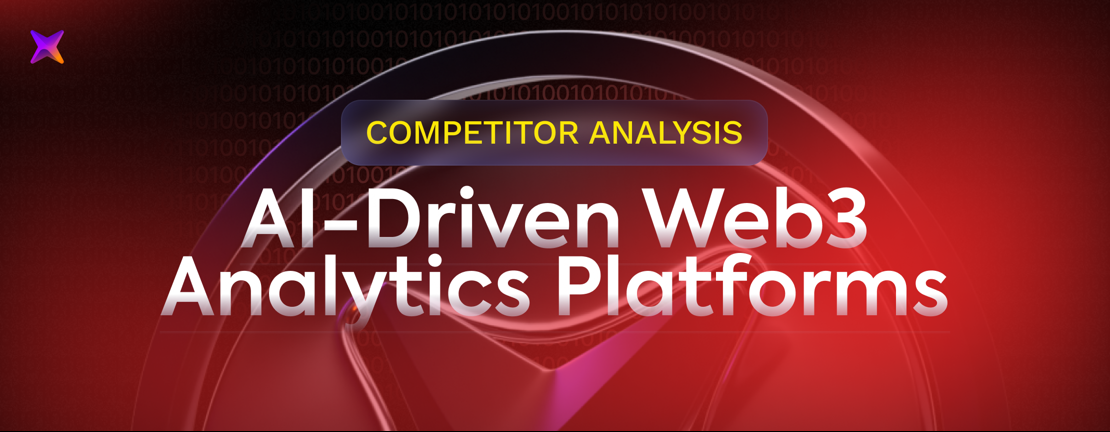
Analyzing the competition between RateX.AI and other AI-powered platforms in the Web3 analytics world helps highlight key differences. Both focus on applying artificial intelligence to understand and assess Web3 data. However, each takes a unique approach.
Comparing RateX.AI to AI-Based Web3 Analytics Tools
RateX.AI works as an advanced AI-driven Web3 intelligence platform. It merges both on-chain and off-chain data, social sentiment, and AI or ML-based analytics to offer token scoring and insights you can act on. It appeals to a wide audience, including “smart degens,” traders, venture capitalists, institutions, centralized exchanges, and developers.
Its standout features are the Meta Scoring Engine, which uses AI to calculate token scores using over 65 metrics, and autonomous AI agents that let people query blockchain or market data through simple natural language.
To explain how RateX.AI is positioned, we explore established and newer competitors providing AI-powered tools for Web3 analytics, market research token evaluation, or trading automation.
The comparison below breaks down competitors based on their features, data scope, intended audience, AI capabilities, pricing, and integration or API options. This helps to find differences or missing features when compared to RateX.AI.
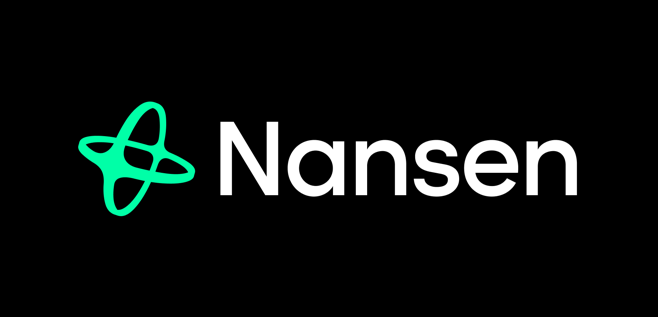
Nansen
Features & Modules
Nansen leads as an analytics platform for blockchain data offering a vast wallet labeling system and tools like “Smart Money” tracking. People can monitor whale movements, big fund transfers, DeFi interactions, and real-time NFT market trends.
The platform gives users a flexible analytics dashboard, Smart Alerts to notify about blockchain events, and a Wallet Profiler to analyze wallet addresses in-depth. It includes tailored views for NFTs and DeFi. Nansen also has a Nansen Query service to let users access data and a research portal filled with organized insights. Along with all this, it features a portfolio tracker and social tools like “Nansen Connect,” which allows chatting through wallet logins.
Data Coverage
Nansen gathers information from more than 12 blockchains, including Ethereum, BNB Chain, Polygon, Solana, Arbitrum, and Optimism. It organizes more than 300 million addresses into categories like exchanges, investment funds, and smart contracts. It also keeps tabs on over 10,000 wallets tagged as smart money. The platform focuses on tracking on-chain activities like token transfers, decentralized trading, NFT creation, and analytics for protocols.
Social or off-chain data is not its primary strength, though it does include some project details and price updates. RateX.AI stands out with its focus on off-chain sentiment pulling insights from platforms like Telegram and X.
Target Audience
Nansen focuses on crypto traders, investors, and analytics professionals who are involved in the space. Its “Pro” users include big players like venture capital firms, hedge funds, and wealthy individuals aiming to track cash flow patterns. Crypto protocols exchanges, and project teams also rely on it to monitor markets and perform due diligence work.
In essence, the platform caters to both experienced retail traders or “degens” and institutional users. This is somewhat similar to RateX.AI’s wide reach, although Nansen has leaned more toward professional audiences over time.
AI/ML Capabilities
Nansen uses data science to group addresses and assign labels. This process can include machine learning to spot entity patterns. It applies AI to uncover trends in marketing and runs algorithms to reveal "alpha" like trending tokens or unusual fund activity. But Nansen’s setup is not focused on conversations.
Users work with dashboards and pre-made queries instead. Nansen added tools to predict trends and activities using AI. However, it has no autonomous agents or natural-language query features like RateX.AI’s chat tools. This makes RateX.AI stand out with its automated AI approach, while Nansen offers strong tools requiring user-driven exploration.
Pricing and Plans
Nansen charges a premium for its services. Monthly plans start at about $99 and can go as high as $1,299 for the top tier. The base plan, which used to be called "Standard," costs $100, while the full Nansen Pro or Alpha package costs over $1,000 each month. These prices show how much weight is placed on its exclusive features like detailed labels and live insights.
RateX.AI offers more flexible and accessible pricing, including options tailored for enterprise use. While Nansen sometimes offers discounts or community-focused plans, it generally caters to users who can profit from the platform's insights, making it a pricey solution.
API and Integration
Nansen sells an API product aimed at developers and large organizations. With tools like Nansen API and the newer Nansen Query, users can pull blockchain data on token movements, wallet balances, and more across supported networks. The API covers a lot but comes with separate pricing. Nansen also works with tools like Google Sheets and has a visual interface to create custom queries. Its enterprise options include compatibility to export data or link it to internal systems.
RateX.AI also provides enterprise tools suited for large-scale applications. One way RateX.AI could stand out is by using more natural language or AI-based querying to make accessing its Meta Scoring Engine easier for developers, compared to Nansen’s traditional query methods.

Messari
Modules & Features
Messari provides a platform to gather information and research about the crypto market. Instead of focusing on on-chain data, it concentrates a lot on curated content. The platform includes a news feed that combines live updates and announcements summarized with AI tools. It also features a database that gives profiles of crypto assets with metrics and disclosures.
Users can use screeners to sort tokens based on different factors. Messari’s reputation comes from its deep research reports, industry analyses, and tools such as Messari Governor, which helps track governance, and fundraising databases (brought in through its Dove Metrics acquisition).
The platform also added AI features like Messari Copilot and other tools to help users build custom queries or filters with natural language to get AI-generated insights. Messari leans toward providing detailed research and quality content rather than focusing on real-time analytics.
Scope of Data
Messari combines off-chain details like news, funding updates, and regulatory happenings with specific on-chain and market data. It includes on-chain metrics like supply, market capitalization, and token economics. However, it lacks detailed transaction-level monitoring found in tools like Nansen or Dune.
The platform offers information on thousands of assets covering pricing, trading volume, and key indicators such as active addresses or revenue often through partner data sources. It monitors social and web trends by tracking project channels and offering a crypto news section.
While Messari focuses on broader metrics and narratives, its on-chain tracking feels lighter compared to RateX.AI. RateX.AI stands out with its live sentiment analysis and real-time "big data" capabilities making it a strong supplement or alternative to Messari’s more in-depth approach.
Target Audience
Messari focuses on serving investors, whether they are retail or institutional, along with crypto founders, analysts, and business development pros. Individuals seeking insights often go for its Pro plan, while its Enterprise plan supports larger entities like funds, exchanges, and institutions.
Venture capitalists, asset managers, and users who rely on both data and context often pick Messari for its strong research offerings. While Messari includes developer tools such as API access, its primary aim leans more toward consuming data rather than automating processes.
RateX.AI shares part of this audience, including venture capitalists, institutions, and traders. However, it also pays attention to more technical users, like Web3 developers and data engineers, thanks to its agent-based tools and API.
AI/ML Capabilities
Messari relies on AI to make it easier for users to explore its platform. The system creates automatic summaries of filings and news while running Messari Copilot, which answers user questions using its research database. It also incorporates NLP tools and suggests AI-generated metrics.
However, unlike RateX.AI, Messari does not deploy autonomous agents or predictive systems to detect real-time signals. Instead, it sticks to NLP tasks and summarization. RateX.AI takes a different path by offering predictive tools like forecasts or risk scores through machine learning. Messari stays rooted in providing well-curated content and historical insights.
Pricing & Plans
Messari provides pricing in tiers. The Lite plan costs about $10 each month and suits individual users. Professionals can opt for the Pro plan costing between $25 and $50. Institutions have the Enterprise plan option. The Lite plan gives access to basic data and news summaries.
Pro subscribers get full research along with extra tools like Copilot. Enterprise users gain access to live alerts, custom services, and in-depth reports. For individuals, Messari seems more affordable than Nansen, but its enterprise pricing maintains a high-end appeal.
RateX.AI offers a competitive package by combining AI, on-chain, and off-chain data at more accessible rates — potentially attracting some of Messari’s users by delivering stronger automation at a lower cost.
API & Integration
Messari’s API, aimed at enterprise users, offers access to data about assets, markets, and news. It provides resources like tools and documentation that help developers, and it supports exporting data as well as SDKs. Messari’s API works well to provide reference data, but it may not deliver live on-chain analytics in the same way RateX.AI does.
RateX.AI emphasizes real-time information by processing billions of transactions and social posts. It could introduce a live analytics API to handle tasks like using an AI agent to get the latest token score or track whale movements, which sets it apart from Messari's more fixed approach.
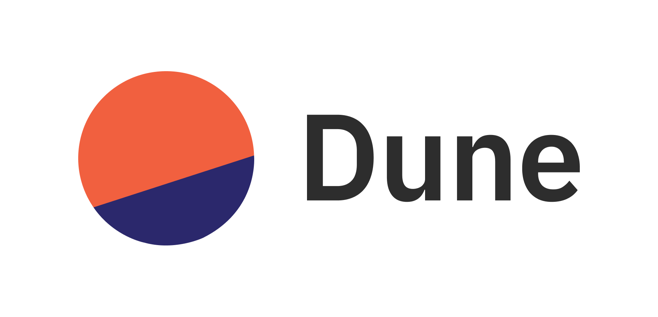
Dune Analytics
Dune Analytics collects and organizes blockchain data to help users study trends and activity on the network. It serves a variety of users, including developers and analysts, by providing visual dashboards and insights into blockchain stats.
Characteristics and Elements
Dune provides an open platform for analytics where users craft SQL queries on indexed blockchain datasets and build dashboards to share. Its biggest strength lies in letting the community create and share custom analytics and visuals. These range from stats on DeFi protocols to trends in NFTs.
In late 2023, Dune rolled out DuneAI giving users a natural language tool to run queries without needing to write SQL themselves. It also revealed Dune Data Hub to help businesses use their own data or connect with Dune’s datasets in warehouses, alongside Dune Alert, which allows users to set up notifications tied to data events. At its core, Dune acts as a flexible analytics workspace.
While user input still plays a large role, its new AI tools aim to make things easier to use.
Information Scope
Dune gathers data from several blockchains like Ethereum and other EVM-compatible chains such as Polygon, BSC, Optimism, and Arbitrum. It has also branched out to Solana and other non-EVM blockchains. The platform provides in-depth on-chain details like transactions, logs, and states, and offers specialized dashboards for different projects.
Users can conduct cross-chain analysis in one spot. While off-chain data isn’t a main priority, Dune Data Hub lets users link external sources. However, the platform doesn’t emphasize social or sentiment analysis.
When compared to RateX.AI, which combines blockchain metrics with external sentiment data and predictive tools, Dune leans more toward custom, hands-on querying. RateX.AI sets itself apart by focusing on automation and ready-made insights like alerts, scores, and answers, whereas Dune hands users the means to create and dig into their own findings.
Target Audience
Dune attracts a mix of analysts, data scientists, and crypto enthusiasts who explore dashboards. It appeals to researchers and developers familiar with SQL and custom tools. Enterprises and crypto teams often rely on Dune to test analytics or track metrics, sometimes using the Dune Data Hub to scale their needs.
DuneAI opens the platform to less technical users by supporting natural language queries, although some analytic know-how helps unlock its full potential. On the other hand, RateX.AI provides AI-driven assistance for tasks catering to those who want automated solutions. Both platforms serve institutions, but while RateX.AI focuses on simplifying tasks, Dune offers deeper manual exploration.
AI/ML Capabilities
Dune’s primary AI feature is DuneAI, a natural language query tool. It changes simple English questions into SQL queries to work with Dune's backend. It serves as an AI-powered search assistant. While it simplifies queries, users still need to interact with it. Dune has also included tools to debug queries with AI and employs helpers based on large language models.
However, Dune’s AI focuses on improving the user interface. It doesn’t handle predictive modeling or analytics. In contrast, RateX.AI takes a more independent approach with its AI. It uses automated agents to watch data and generate useful insights on its own. Instead of requiring users to build everything, RateX.AI creates value by providing alerts, predictions, and risk assessments.
Pricing and Plans
Dune uses a freemium approach. Anyone can run queries and create dashboards, but private dashboards and extra features need a paid subscription. In the past, Dune aimed its plans at analysts going over free limits, which used to cost about $390 each month. Enterprise options and the Dune Data Hub have separate pricing. RateX.AI adopts a SaaS pricing structure offering more adaptable and value-driven plans.
One big contrast is the free community tier offered by RateX.AI that lets users dive into dashboards right away. Dune's focus on its SQL query library and paid options might feel less user-friendly for people wanting ready-to-use tools.
API and Integration
Dune offers an API to display query results allowing developers to bring its data into other platforms. Through Dune Data Hub, users can connect with tools like BigQuery and pull in external datasets to use within Dune. This setup works well for people who know their way around data.
By comparison, RateX.AI focuses on providing a smoother, more automated experience. Using APIs, it could deliver insights like token scores or liquidity warnings straight to internal dashboards. Its autonomous agents start flagging important events and sending alerts — similar to Dune Alert — it makes the tool even more useful.
While Dune is solidifying its role as a platform, RateX.AI plans to be aiming to do more by acting as both a platform and a smart layer that plugs into how users make decisions.
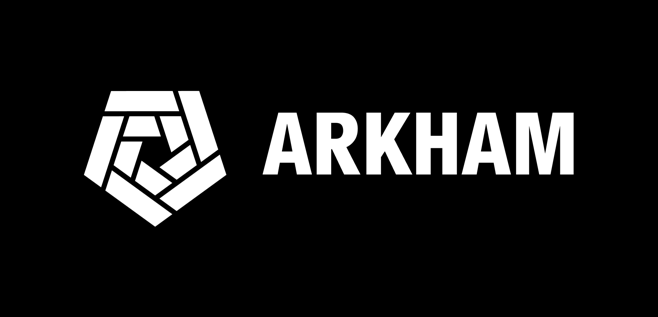
Arkham Intelligence
Functions and Sections
Arkham focuses on uncovering identities behind blockchain transactions. It works to link wallet addresses to real-world people and show how money moves. Its main tools include the Arkham Dashboard, which lets users track specific data using a custom setup. Another feature is the Arkham Intel Exchange, a marketplace that rewards users with bounties to expose wallet owners through its “dox-to-earn” model.
The Arkham Visualizer provides a graph view to map how funds move across wallets. Users can also access Token pages to see major holders and token flows as well as Private Labels to tag wallets for personal use. This platform acts as a powerful cross-chain explorer combining data aggregation and detailed labeling. Its native token ARKM, encourages user contributions and plays a role in managing the intel exchange.
Information Scope
Arkham works across various blockchains like Bitcoin, Ethereum popular layer-2 solutions like Arbitrum and Optimism, and sidechains including Polygon and Avalanche. It also supports networks like BNB Chain, Tron, Solana, Base, TON, and others.
The platform gathers information from these chains and links it allowing users to track activities across chains based on entities. For example, it can detect when the same person controls both a BTC and Ethereum address then combines their data. Arkham centers its work on analyzing details like wallet balances, transactions, trades, and interactions while spotting trends such as arbitrage or hacker movement.
Although it relies on off-chain data to connect identities, it doesn't emphasize areas like social media or general news. RateX.AI takes a different approach by adding layers like real-time off-chain news and sentiment analysis, which gives it a unique angle compared to Arkham's focus on blockchain-based forensics.
Target Audience
Arkham focuses on serving active traders, quantitative hedge funds, and investigators. It caters to anyone trying to uncover who is behind blockchain transactions.
Many use it to connect specific wallets or funds to certain buyers or actors. It often helps with compliance or tracking suspicious activity like hacks or illegal transfers. Institutions and law enforcement also find it useful. The platform emphasizes delivering identity-driven insights.
At the same time, RateX.AI directs its solutions more toward crypto funds, researchers, and professional traders. It also supports developers and creators by providing AI tools that enable automation and offer integration options expanding beyond just linking addresses.
AI/ML Capabilities
Arkham runs on its own AI engine called Ultra. This engine uses machine learning to collect and study both blockchain data and external data tying it back to identifiable groups or individuals. It can connect wallet addresses with things like exchanges, businesses, or even X profiles. Another feature, Arkham AI, creates easy-to-understand summaries of transaction patterns.
The AI Transaction Analyzer breaks down what happens in a specific transaction into simple language working much like a natural language processing tool. However, Arkham doesn’t include independent agents. Instead, its AI functions as a backend system to support labeling and summarization.
RateX.AI takes a more user-focused route by including interactive agents. These agents can help users answer questions, track trends, and make predictions on their own. While Arkham centers on identifying entities, RateX.AI leans more toward helping with investments using tools for scoring and forecasting.
Costs and Options
When Arkham launched, it let users sign up (sometimes using referrals) and access basic analytics without cost. The platform’s monetization relies on the ARKM token, which is used on the Intel Exchange to place or earn bounties. Users might need to spend or hold ARKM to unlock premium features or use the API.
As of 2024, basic analytics remain free, but details about enterprise or API pricing have not been shared. Exchanges, funds, or businesses may collaborate with Arkham to gain advanced tools or analysis. RateX.AI takes a different route with a straightforward SaaS model and fiat subscription payments, which might attract enterprise customers who avoid token-based systems.
API and Integration
Arkham doesn’t seem to focus on providing a public API leaning more towards enterprise setups or one-off integrations. A company might, for instance, ask for a custom stream of labeled addresses or access Arkham's data.
The Arkham Intel Exchange works as a data interface where users can both submit information and retrieve labeled results. RateX.AI however, is ready to give broader API access to its scoring and analytics tools. If RateX.AI lets developers pull live data like token performance, risks, or whale activities through APIs or webhooks, it appeals to technical users and tool creators.
While Arkham stands out in attribution, RateX.AI attracts users who need real-time data integrated into their workflows and dashboards.
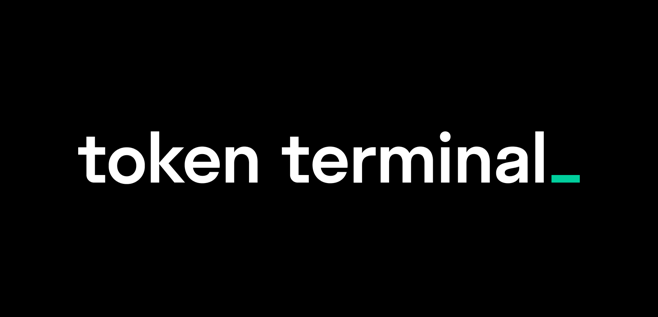
Token Terminal
Modules and Features
Token Terminal works as a platform that provides analytics centered around core financial data for cryptocurrency projects. It monitors details such as revenue generated by protocols, fees collected, token rewards provided, and the number of users. It calculates important financial metrics like P/E ratios, total value locked (TVL), and developer valuations.
The platform presents dashboards for hundreds of crypto projects, including L1 blockchains and DeFi apps, with uniform visualizations showing revenue, expenses, token distributions, and more. Users can also access tools to compare projects and reports like “Weekly fundamentals” to study trends. Key features include a web interface to view project data, personalized dashboards, tools to screen projects by financial fundamentals, and plugins for Google Sheets or Excel that allow exporting data.
Unlike many other similar platforms, Token Terminal avoids focusing on things like transaction-level data or social sentiment. Instead, it emphasizes the business aspects of crypto ecosystems.
Information Scope
Token Terminal uses on-chain and off-chain data to create its metrics. On-chain data comes from things like smart contract activities and economic transactions such as DEX trading volume or lending rates.
Off-chain data seems to include token prices and treasury figures, which help calculate things like market cap or price-to-earnings ratios. It focuses on big Layer 1 protocols and top decentralized apps covering a few hundred assets. Smaller tokens don’t make the list unless they reach a specific level of importance.
When compared to RateX.AI, Token Terminal places more emphasis on financial data analysis, which is critical to investors. Meanwhile, RateX.AI adds sentiment and technical aspects to its features.
Target Audience
Token Terminal focuses on investors larger ones like hedge funds, analysts, VCs, and researchers, who prioritize understanding project fundamentals. It attracts those valuing long-term growth or analyzing crypto protocols in ways similar to evaluating traditional assets.
Teams handling token treasuries or writing project reports may also rely on it. The pricing and layout cater to professionals. Short-term traders or casual users avoid Token Terminal since it lacks quick signals or simple summaries.
Instead, RateX.AI delivers easy-to-digest summaries (using MetaScore) and insights powered by AI. This approach may fit general crypto users or those without deep analytical backgrounds. Simplifying fundamentals or tying them to sentiment could help RateX.AI reach a wider audience.
AI/ML Features
Token Terminal avoids focusing on AI. It relies on uniformity and reliability as its main strengths. Most of its work is done or follows rule-based processes, like ranking metrics using P/E ratios or similar valuation systems. It does not include AI features like predictive models, conversational tools, or autonomous agents.
The platform works more like a classic financial terminal. On the flip side, RateX.AI uses tools like autonomous agents and modeling to deliver predictive or qualitative insights. This enables it to handle tasks like answering spontaneous questions, creating scores, or making forecasts—areas Token Terminal does not cover.
Costs and Packages
Token Terminal offers one free plan and two paid options. The free plan provides historical data plus basic tools but restricts access to dashboards and limits downloads. The Pro plan priced at $350 per month (or $299 monthly with annual billing), targets professionals who require features like CSV exports, dashboards, and team collaboration tools. Another option is the API access plan costing $999 each month, which allows developers to query metrics using a REST API, although it enforces daily request limits.
Beyond these, a custom-priced enterprise plan includes integration options and private support. Token Terminal caters mainly to institutional clients with significant needs. Combining fundamentals (similar to what Token Terminal provides) with sentiment analysis and scoring at a lower price makes RateX.AI appealing to those who don’t require Token Terminal's full suite of financial tools.
API and Integration
Token Terminal offers solid integration features. It provides an API to pull metrics and supports storage solutions like BigQuery and Snowflake. Plugins for Excel and Google Sheets also help analysts sync data with their existing workflows.
RateX.AI stands out because it has a natural language interface. Instead of relying on APIs to sift through raw data, users can ask something like, "Show me five tokens with great scores and low P/E ratios," and receive answers blending financial insights with modeling. This conversational approach helps RateX.AI set itself apart from Token Terminal and others that concentrate on static API output.
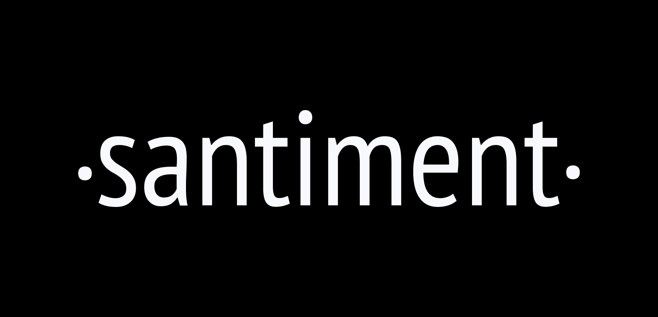
Santiment
Santiment provides insights into cryptocurrency trends and market behavior. It offers tools to assess on-chain metrics social media sentiment, and other data that help understand digital asset performance. Analysts and investors use it to make informed decisions and predict market movements.
Modules and Features
Santiment collects on-chain social media, and developer-related data to explore sentiment in the crypto market. Its main platform, Sanbase, displays live charts and data for over 1,600 assets. Users can access token stats like volume, transaction numbers, holder trends, and token flows.
It also tracks social sentiment such as mentions, mood shifts, and influencer actions, while providing developer activity stats like GitHub commits. Santiment provides tools like SanAPI to help developers, a Google Sheets plugin, and community tools such as SanR for trading signals and Santholders for wallet tracking.
The platform also generates alerts and reports based on sentiment trends, like keyword tracking, to catch crowd psychology . It's a hub packed with data focused on market behavior.
Information Scope
Santiment has one of the broadest collections of data in crypto analytics. It gathers on-chain data like Ethereum and ERC-20 tokens as well as social insights from platforms such as X, Reddit, and Telegram. Development data from GitHub is also part of its coverage. It provides metrics like exchange activity, social volume, developer contributions, and discussions from forums.
The platform monitors thousands of tokens and combines time-series data with contextual information. For instance, Santiment displays how a token’s price changes alongside GitHub updates or Telegram activity.
While RateX.AI simplifies data with MetaScores and automated AI agents, Santiment leans toward richer datasets. RateX.AI focuses on offering ready-to-use signals in real time instead of raw data, which doesn’t demand as much manual examination.
Target Audience
Santiment appeals to a wide variety of people. Hedge funds, analysts, retail traders, and even crypto project teams turn to Santiment. It works well for quantitative traders who rely on custom tools as well as everyday investors trying to spot trends like price changes or crowd sentiment.
Researchers and users creating tailored alerts also favor it. Unlike RateX.AI, which relies on AI to simplify things with scores and automation, Santiment expects users to figure out the data on their own. RateX.AI, by contrast, already delivers insights that don’t require chart interpretation — making it more accessible to those who want easier tools or automated solutions.
AI/ML Features
Santiment combines machine learning with human expertise. Its sentiment analysis relies on NLP and clustering social signals like detecting positive or negative sentiment. It does not provide predictive AI tools or autonomous agents.
Instead, it offers comprehensive dashboards and a tool called Behavior Analysis to detect unusual crowd patterns. Some of its newsletters and metrics incorporate signals enhanced with machine learning, but users must interpret the data themselves.
On the other hand, RateX.AI stands out by utilizing independent agents capable of delivering insights and predictions using multiple layers of data. This makes RateX.AI a better fit for users who want actionable conclusions rather than raw data from their analytics.
Costs and Options
Santiment provides several pricing plans. It has a free tier with limited features, Sanbase Pro at $49 per month for real-time data and insights, and Sanbase Max at $249 per month, which gives full access. Business plans start at about $420 each month. Higher-end plans like Business Max costing $999 , include multi-asset access, team tools, and expanded API limits. Users can also pay with the SAN token to lower their costs.
API and Integration
Santiment offers SanAPI, which gives access to detailed endpoints covering social data, on-chain metrics, development activity, and more. It provides a free tier with limited rates and several paid plans to unlock broader access.
Many crypto funds and products rely on it. In addition to this, Santiment includes plugins for Google Sheets and spreadsheet data feeds to help teams bring it into their analysis workflows. While the system supports flexible integration, it lacks both conversational tools and built-in scoring systems.
Alternatively, RateX.AI aims to deliver actionable API replies like “Top 5 tokens to watch this week based on MetaScore + sentiment” and real-time automation. This approach gives RateX.AI an advantage for those seeking direct insights instead of just raw data in markets that move.
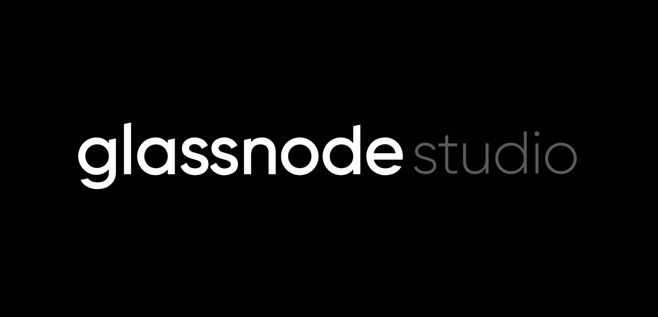
Glassnode
Features & Modules
Glassnode specializes in on-chain market data tied to Bitcoin, Ethereum, and big crypto assets. Its platform, Glassnode Studio, offers detailed metrics such as address counts, transaction totals, realized cap, MVRV ratio, NUPL, and other tools to observe investor trends.
The platform focuses on giving high-level insights, like tracking long-term holder activity or evaluating the overall state of networks. Through Glassnode Insights, it provides weekly trend reports and deeper market research. While you can explore charts and metrics, the platform isn't as adaptable as a full custom analytics solution. The Workbench feature lets you create formulas, but personalizing beyond that remains limited.
Information Scope
Glassnode started by analyzing Bitcoin and Ethereum but later added support for other big networks like Litecoin and some Ethereum tokens. It provides both wallet-level and address-level insights such as tracking exchange inflows and outflows. Sometimes, it even labels wallets belonging to centralized exchanges to add more detail to its data. Although it focuses on detailed analytics for Bitcoin and Ethereum, it tracks fewer blockchains compared to other platforms.
Unlike Glassnode, RateX.AI offers a larger variety of data, including off-chain information like social trends, order books from exchanges, and Telegram activity. While Glassnode does Bitcoin analysis better, RateX.AI spreads its focus across more areas and combines different data sources.
Target Audience
Glassnode helps investors and researchers understand the basics and investor actions driving the market. Institutional funds, analysts, and media professionals often use it. The platform provides insights into long-term trends, like "long-term holders accumulating BTC again." However, using its metrics demands some level of skill. It focuses more on in-depth analysis than quick signals.
Meanwhile, RateX.AI caters to those seeking practical tips such as "What should I keep an eye on or steer clear of this week?" While there might be some overlap between users of Glassnode and RateX.AI, the two differ in approach. RateX.AI leans toward automated score-based insights, while Glassnode is geared toward detailed manual research.
AI/ML Features
Glassnode does not include any AI tools yet. Its metrics come from fixed calculations using on-chain data. Although the Glassnode Data Science team has applied machine learning in research, like modeling sell pressure, these tools are not part of the platform or available to users. There’s no AI assistant or forecasting tool provided. Users must choose and analyze metrics on their own.
RateX.AI provides autonomous AI agents and a natural language interface that answers questions and runs predictive models. It simplifies recognizing Glassnode-type trends such as accumulation phases so users don't need to examine each chart themselves. This makes RateX.AI more user-friendly and action-oriented by turning complex data into easy insights.
Costs and Options
Glassnode has different subscription options. Its free Standard plan includes some basic metrics and data with a delay. The Advanced plan is about €29 per month, while the Professional plan costs €799 monthly, or around $869 in USD, and gives access to custom alerts and full historical data.
These higher-priced options are meant more for institutions or advanced users. Another option exists for enterprise users who need API access and system integrations.
At the same time, RateX.AI is designed with affordability in mind, particularly for individuals. This makes RateX.AI a strong choice for smaller teams or casual users.
API and Integration
Glassnode provides an API with access to both on-chain and market metrics using REST. It comes with certain paid plans and works well with tools like Excel and dashboards. But it does not allow AI-based queries or chat-style interactions.
Instead, RateX.AI offers something different. Its natural language API and autonomous agents let users ask things like “Which token shows the largest weekly trend reversal?” without needing to pull raw data. While Glassnode is dependable and well-documented, RateX.AI delivers greater flexibility and automation. It serves not just as a research tool but also as an intelligence layer.
This layer can integrate into dashboards, alerts, and other systems — making deep manual analysis less necessary.
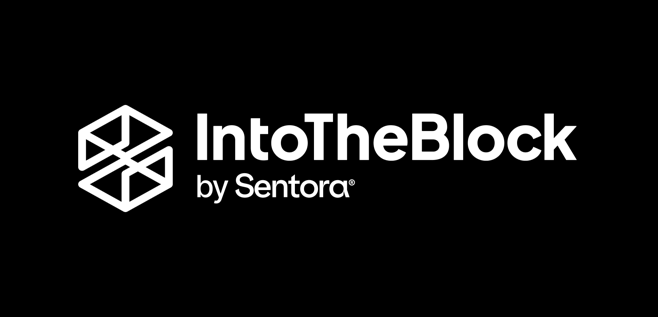
IntoTheBlock
Options and Components
IntoTheBlock, or ITB, provides analytics for the crypto market using on-chain data, market stats, and AI-generated signals. It has a variety of dashboards that show many metrics like big transactions, holder distribution, correlations, price swings, and even DeFi-focused data such as liquidity pools, yields, and updates on NFTs. ITB also includes tools like predictive models and features such as "In/Out of the Money", "Bid-Ask Volume Imbalance", and metrics on social sentiment.
It introduced Perspectives, which delivers curated research on topics like Layer1 protocols and stablecoins. One standout addition is AI Insights, which uses large language models to create simple summaries of its dashboards. This feature is similar to what RateX.AI does with explaining data but leans toward improving its visual tools with plain-language AI support.
Information Scope
IntoTheBlock tracks over 600 assets across multiple blockchains like Bitcoin and Ethereum. It gathers information on things such as addresses, UTXOs, DEX volumes, TVL, price forecasts, NFT activities, and order book patterns. It also includes social signals and sentiment data, though these are less central compared to tools like RateX.AI or Santiment.
Unlike RateX.AI, which prioritizes real-time crowd data, ITB leans more toward quantitative metrics and predictions. It offers some sentiment and influencer or KOL indicators, but these might update less often or be spread across different features. In contrast, RateX.AI brings together real-time updates from various sources and combines off-chain signals with technical data creating a fuller, more current view of the market.
Target Audience
IntoTheBlock serves a wide range of users spanning from individual traders to larger institutional clients. Its Pro plan works well for people on a budget, while the enterprise tools cater to exchanges, investment funds, and other business-focused needs.
Analysts and content creators often rely on the platform to analyze token activity or include data signals in their work. Crypto platforms also use it to add insights to their dashboards.
At the same time, RateX.AI targets a similar crowd — traders, investors, and developers — but takes a different approach. It focuses on easy decision-making with autonomous AI agents.
Instead of expecting users to dive into dashboards or break down complex models like ITB, RateX.AI delivers ready-to-use answers, which makes it appealing for those who prefer quick insights without handling graphs.
Abilities in AI and Machine Learning
From the start, IntoTheBlock relied on AI to get the job done. It applies machine learning to predict things like future price ranges and evaluate tokens. The AI Insights feature — one of its rare tools made for users — simplifies dashboard data into easy-to-read natural language.
But ITB skips features like autonomous agents or a natural-language query system that RateX.AI offers. Most of ITB’s insights rely on models instead of agents. In turn, RateX.AI steps up with live agents that provide predictive scores, answer questions, and track real-time events.
Both apply AI in their designs, but they differ in approach: ITB enhances dashboards, while RateX.AI focuses on automated assistance.
Costs and Packages
IntoTheBlock provides a free plan with delayed data. It also has a Basic tier costing $8 per month, a Pro plan priced around $25 giving full access to assets and reports, and a custom-priced enterprise level.
Compared to most platforms out there, ITB’s pricing stands out as one of the cheapest options for advanced analytics. Enterprise users get extra perks like APIs, B2B dashboards, and white-label charts.
API & Integration
ITB gives enterprise and Pro users APIs to access on-chain data, AI signals, and dashboards. It works with Google Sheets, B2B connections, and web plugins to embed data or charts. They have also made it possible to integrate with crypto exchanges and research organizations. But ITB does not include natural language queries or systems driven by AI.
RateX.AI aims to take things further by not just delivering raw data but providing smart answers to questions like “Which token has the highest reversal risk this week?” Its conversational platform, along with real-time automated updates, can help teams or projects get insights without needing to decode complex metrics.

Token Metrics (AI-Based Investment Tool)
Characteristics and Components
Token Metrics combines data analysis, AI-based ratings, and investment insights. It provides users with token scores built from fundamentals, on-chain metrics, and technical data.
The platform gives AI-based price predictions and offers model portfolios or indices for investors to follow. One standout tool is the AI Chatbot, which uses the platform's data and research to answer user questions. Token Metrics also includes tools like screeners, sector indices such as DeFi and metaverse, and reviews related to NFTs.
Although it publishes things like newsletters and podcasts, its main focus is helping people pick tokens through its AI-driven systems. This makes it share some similarities with RateX.AI, though Token Metrics leans more into portfolio creation and signal generation. For instance, it might say, “This token has an 85% chance of going up”, whereas RateX.AI leans more toward explaining the reasoning and risks behind those predictions giving users tools to make their decisions.
Information Scope
Token Metrics combines market cap, price technical data, on-chain analytics, and token reviews. They used to check codebases and included those insights in their scores. The platform may also factor in social sentiment, but the sourcing of this is unclear. Token Metrics focuses more on making predictions and tracks hundreds of high-ranking tokens, plus a few smaller ones.
It doesn’t offer detailed on-chain data or alerts like RateX.AI does. Instead, it creates score summaries from various metrics. RateX.AI includes similar scoring tools but adds features like real-time tracking, detailed on-chain views, and access to raw data, which Token Metrics lacks. Token Metrics offers tools like AI-based portfolio advice in areas RateX.AI doesn’t, but it doesn’t explain its signal-building process as clearly.
Target Audience
Token Metrics focuses on retail and professional investors who need guidance to build their crypto portfolio. It appeals to newbies by offering promises like "unlock smarter investing with AI" while also catering to experienced pros and teams.
Its audience often overlaps with RateX.AI, as both target retail traders, institutional analysts, and investors aiming to cut down research time. Token Metrics works like a closed system where users are expected to stick to its recommendations.
On the other hand, RateX.AI feels more flexible. It allows you to ask questions, create workflows, or set up automated updates. While Token Metrics leans towards retail investors, RateX.AI fits institutional needs too. It helps hedge funds or trading desks that want to mix AI insights with human decision-making.
AI and Machine Learning Features
Token Metrics relies on AI. It applies machine learning to predict trends, evaluate tokens, and handle user inquiries. Its AI provides tools to recommend portfolios, create clustering models, and answer in human-like language. The platform acts almost like a crypto robo-advisor.
RateX.AI also depends on AI but focuses more on tasks like analyzing risk in real-time, offering token-specific alerts, and running predictive monitoring. Token Metrics might say a token is a good fit for cautious investors. However, RateX.AI could explain the reasons behind that choice and let users dig deeper or get updates using agent assistance.
Token Metrics introduced its own token, TM or TM21, showcasing ties to Web3 goals. In comparison, RateX.AI leans further into giving smart trading support rather than just pure research tools.
Pricing & Plans
Token Metrics offers multiple subscription levels. The Free plan provides limited features, while the Basic plan costs $19.99 per month. The Advanced plan is priced at $39.99 , and the Professional plan comes in at about $99 each month. Higher-tier subscriptions offer more tools, daily updates, and expert analysis reports. While their enterprise API exists, it’s offered upon request.
In comparison, RateX.AI delivers competitive pricing — catering to users who prefer access to signals without relying on pre-set portfolio models. The main difference lies in Token Metrics charging for its specialized insights, whereas RateX.AI stands out by offering more adaptability, clarity, and affordability.
API & Integration
Token Metrics keeps its platform closed off. It doesn’t offer public API access, although premium users get a bit of restricted use. A mobile app is available, but the system isn’t made to embed with third-party tools or to handle CEX-level integrations.
Instead, RateX.AI allows agent-based insights, automation, and ties into existing tools. This flexibility makes RateX.AI a better pick for exchanges, big projects, or trading platforms looking to streamline their operations.
While Token Metrics excels at providing in-house predictions, RateX.AI takes the lead with automation real-time alerts, and advanced querying. These features fit the needs of platform developers, analysts, and active users more.
Conclusion
RateX.AI clearly stands out in the packed world of crypto analytics tools. Most platforms concentrate on just one thing like wallet tracking social sentiment, or raw metrics, but RateX.AI combines all these features into a single platform.
With its AI agents running independently token scoring system instant alerts, and ability to pull data from various platforms, it provides more than an average dashboard. Traders, funds, and data teams get both detailed insights and simplicity, thanks to its natural language search adjustable tools, and seamless integration.
The best part about RateX.AI is that it offers a variety of features at an affordable price. It makes advanced crypto tools easier to use without losing functionality. It combines strength with speed while focusing on what users need. While crypto often feels complicated, RateX.AI stands out by being easy to understand.
Read More




 Get RateX Pro
Get RateX Pro

 06 Jun 2024
06 Jun 2024
